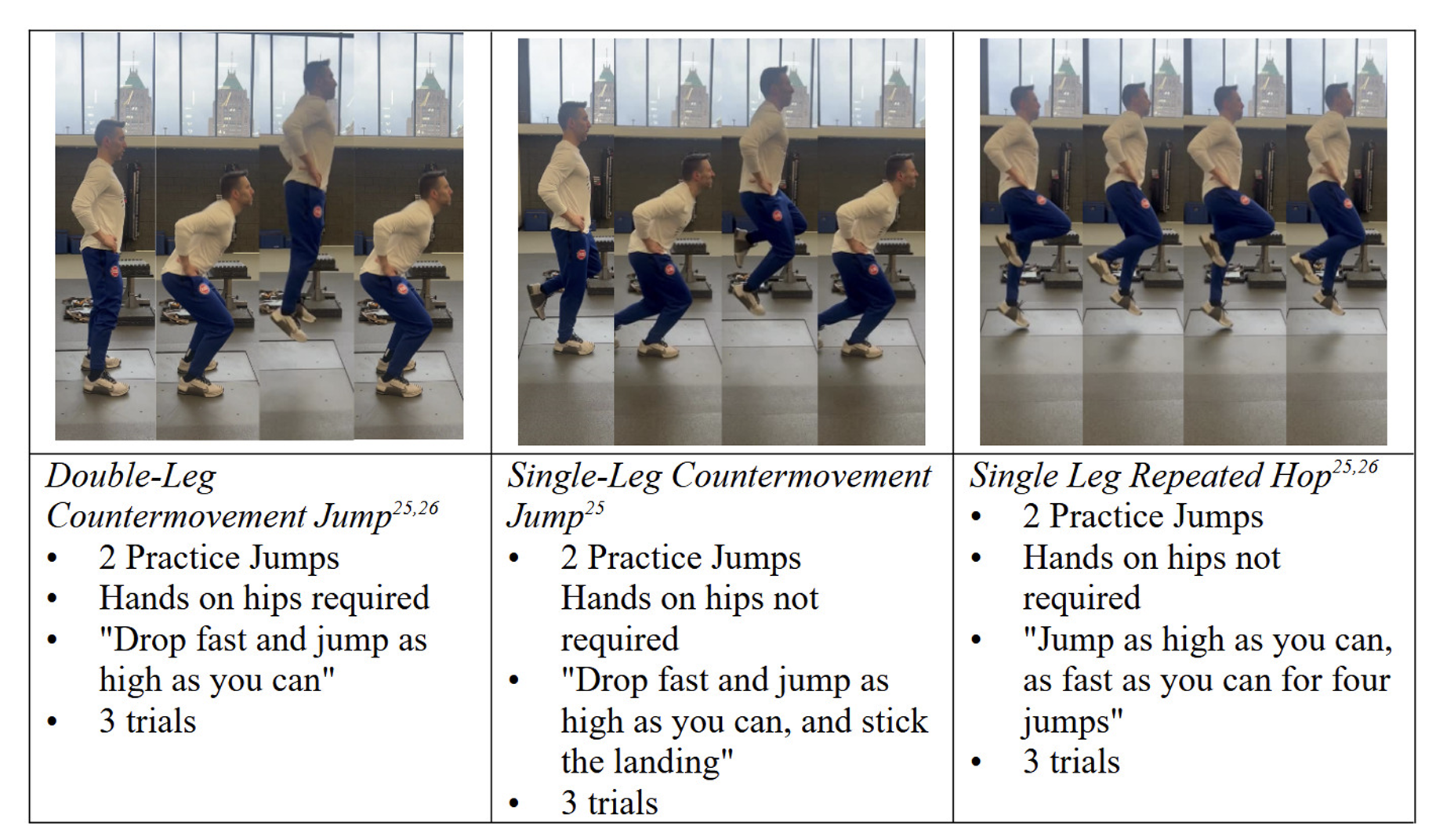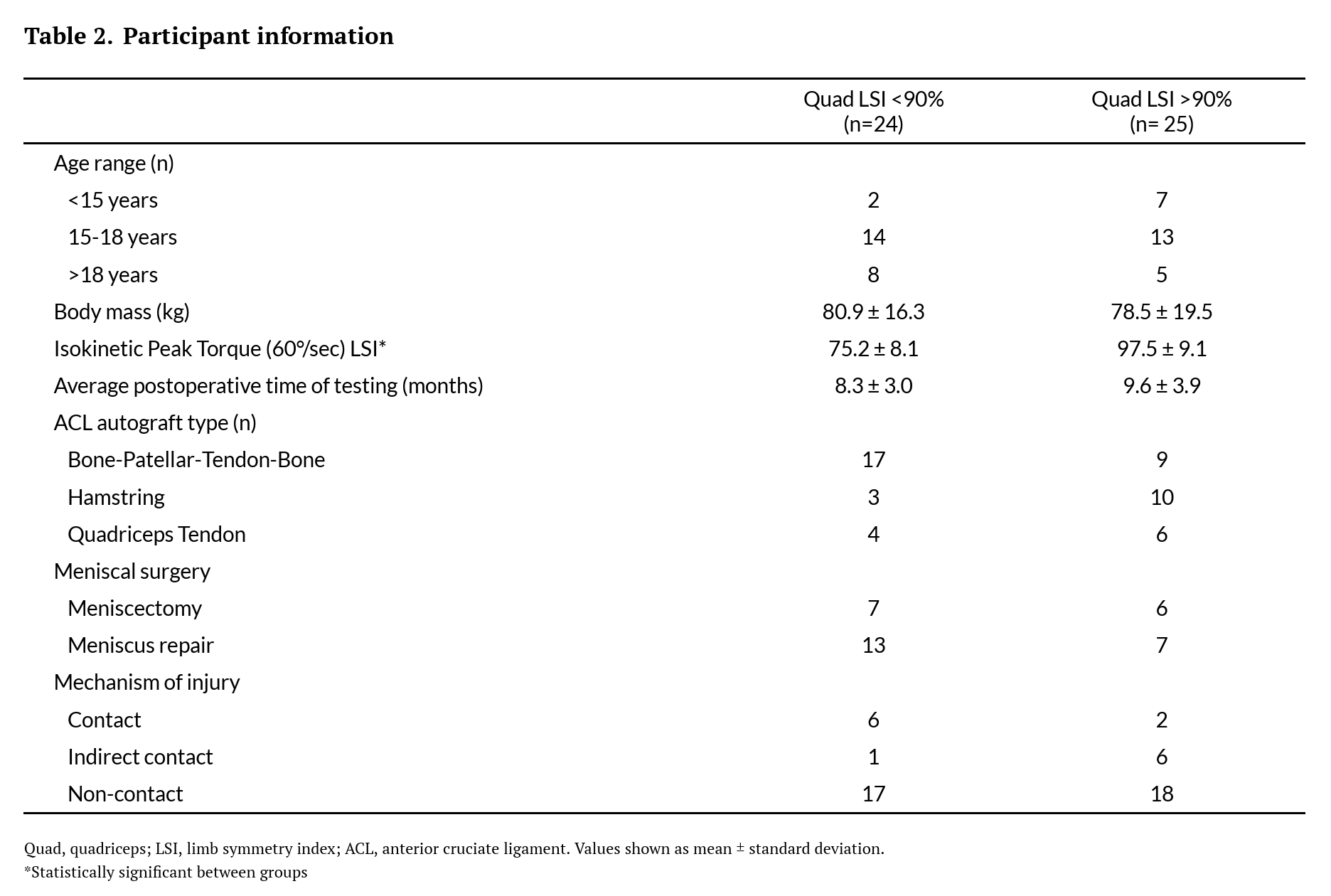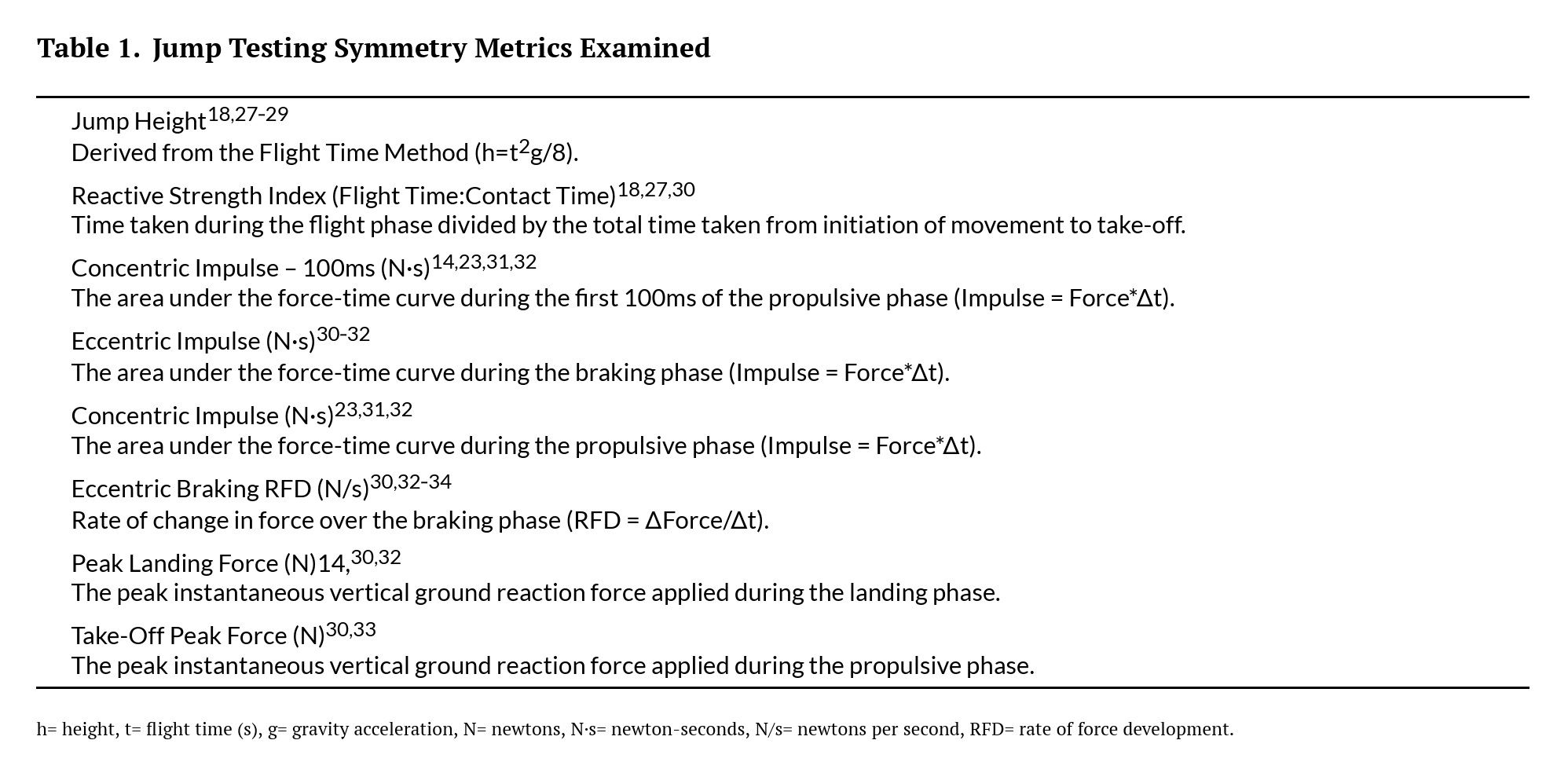ACL injuries are common in basketball and re-injury rates remain high, especially among youth athletes.
Force plate jump testing can identify asymmetries that traditional rehab benchmarks might miss.
This study addresses the lack of clarity around which jump tests and metrics best reveal return-to-play readiness post-ACLR in basketball players.
Which jump tasks and metrics best highlight persistent asymmetries in ACLR basketball athletes?

What Did the Researchers Do?
Researchers split 49 male high school and collegiate basketball players in late-stage ACLR rehab into two groups:
- Quad LSI <90% (n=24) – more strength asymmetry
- Quad LSI ≥90% (n=25) – less asymmetry

Testing Protocol
- Isokinetic quadriceps strength test (gold standard)
- Force plate analysis on 3 jump tasks:
- Double-Leg Countermovement Jump (DL-CMJ)
- Single-Leg Countermovement Jump (SL-CMJ)
- Single-Leg Repeated Hop (SL-RH)
Metrics Examined
- Jump Height
- Reactive Strength Index (FT:CT)
- Concentric/Eccentric Impulse
- Eccentric RFD
- Peak Take-Off Force
- Peak Landing Force

Analysis
- Compared limb symmetry index (LSI) across groups
- Determined which jump metrics correlated with quad strength symmetry
What Were the Results?
Double-Leg CMJ Identified Key Differences
Athletes with <90% quad LSI showed significantly worse symmetry in:
- Eccentric RFD (MD = -22.6)
- Concentric Impulse (MD = -22.4)
- Concentric Impulse 100ms (MD = -24.0)
- Contact Time (MD = -0.43)
- Peak Take-Off Force (MD = -12.7)
Single Leg Repeat Hop Revealed Deficits
Significant asymmetry in:
- Jump Height (MD = -12.4)
- Flight Time:Contact Time (MD = +13.3)
Single Leg CMJ Missed Asymmetries
- No significant differences were found across any SL-CMJ metrics.
What Does This Mean?
Jump Testing Should Be a Battery, Not a Single Test
- DL-CMJ and SL-RH detect asymmetries better than SL-CMJ.
- Using only a single jump type (e.g., SL-CMJ) could miss critical asymmetries.
Strength and Jump Testing Tell Different Stories
- Athletes may pass quad strength thresholds but still show kinetic asymmetries.
- Jump testing complements, not replaces, traditional strength tests.
Variability Matters
- Large standard deviations and CVs suggest wide performance variability.
- This undermines the “90% symmetry rule” as a rigid pass/fail benchmark.
Limitations
- All-male, single-institution sample limits generalizability.
- No follow-up on actual return-to-sport outcomes (i.e., re-injury).
Coach's Takeaway
Use Multiple Jump Tests
- Relying on just SL-CMJ might cause you to miss lingering asymmetries.
- Include DL-CMJ and SL-RH in your return-to-play assessments.
Quadriceps Strength Alone Isn’t Enough
- An athlete may “pass” strength tests but still show neuromuscular deficits in force plate data.
- Jump testing allows for evaluation beyond strength, such as stretch-shortening cycle ability.
The "90% Rule" is Flexible
- The variability in jump metrics means you need to think beyond rigid thresholds.
- Track trends and consider coefficients of variation when interpreting results.
Use a Testing Battery
This quote from the authors does a great job of summarizing this study and the practical applications of the data:
"Basketball athletes in the final phases of ACLR rehabilitation who exhibit more significant quadriceps strength asymmetry demonstrated greater asymmetry during double-leg and single-leg reactive jumping tasks but not during single-leg countermovement jumps. These inconsistencies highlight the importance of implementing a battery of jump tests during rehabilitation to ensure adequate restoration of the several physical qualities required of basketball athletes."
I hope this help,
Ramsey




